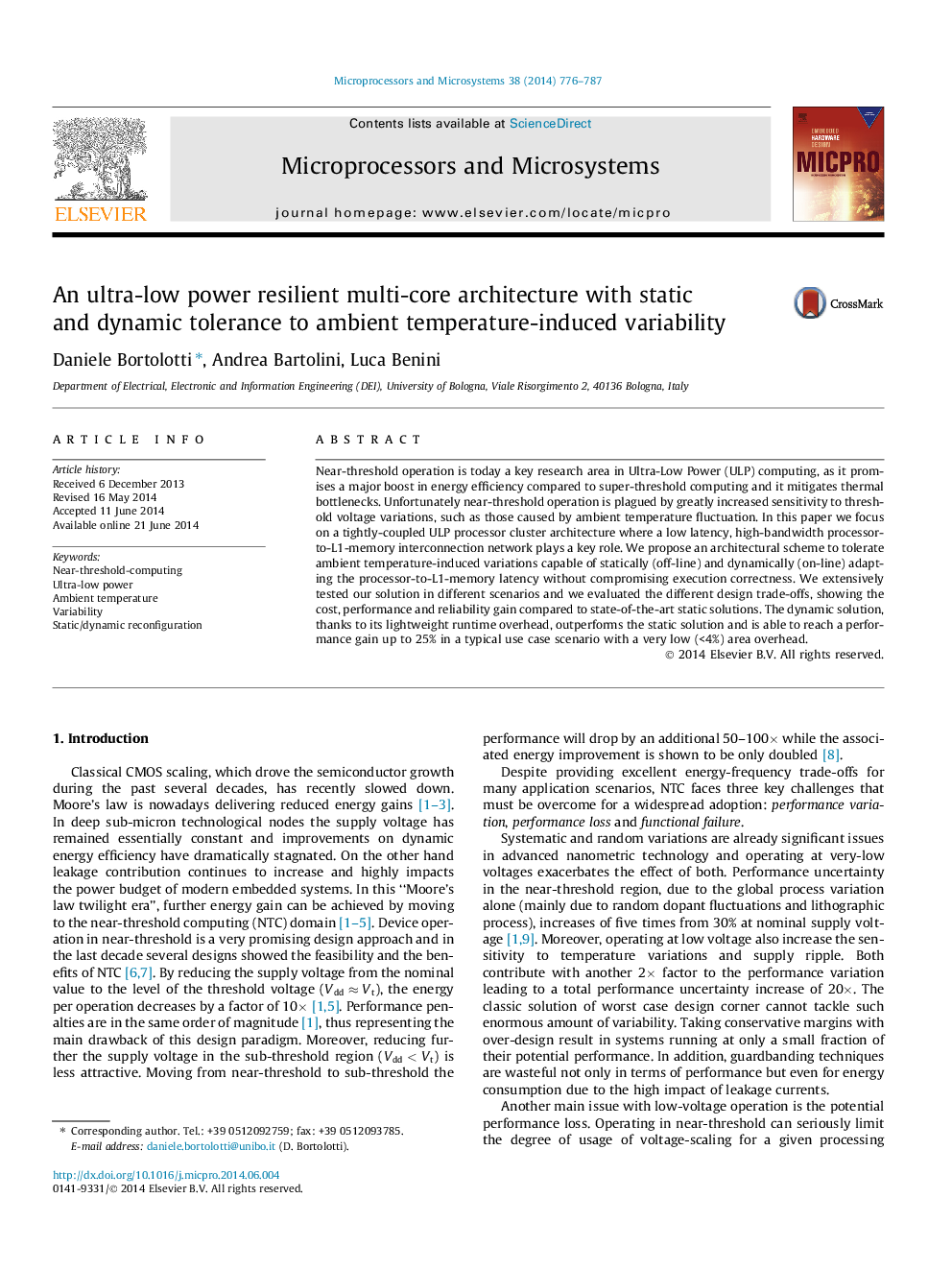| Article ID | Journal | Published Year | Pages | File Type |
|---|---|---|---|---|
| 10343014 | Microprocessors and Microsystems | 2014 | 12 Pages |
Abstract
Near-threshold operation is today a key research area in Ultra-Low Power (ULP) computing, as it promises a major boost in energy efficiency compared to super-threshold computing and it mitigates thermal bottlenecks. Unfortunately near-threshold operation is plagued by greatly increased sensitivity to threshold voltage variations, such as those caused by ambient temperature fluctuation. In this paper we focus on a tightly-coupled ULP processor cluster architecture where a low latency, high-bandwidth processor-to-L1-memory interconnection network plays a key role. We propose an architectural scheme to tolerate ambient temperature-induced variations capable of statically (off-line) and dynamically (on-line) adapting the processor-to-L1-memory latency without compromising execution correctness. We extensively tested our solution in different scenarios and we evaluated the different design trade-offs, showing the cost, performance and reliability gain compared to state-of-the-art static solutions. The dynamic solution, thanks to its lightweight runtime overhead, outperforms the static solution and is able to reach a performance gain up to 25% in a typical use case scenario with a very low (<4%) area overhead.
Related Topics
Physical Sciences and Engineering
Computer Science
Computer Networks and Communications
Authors
Daniele Bortolotti, Andrea Bartolini, Luca Benini,
